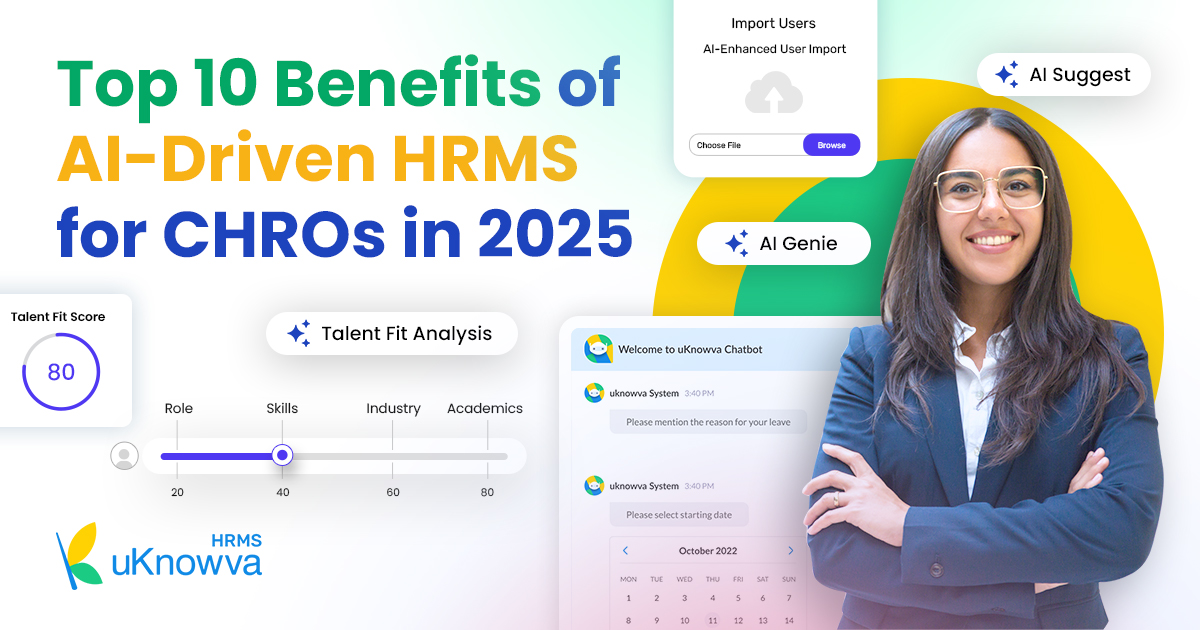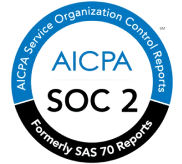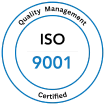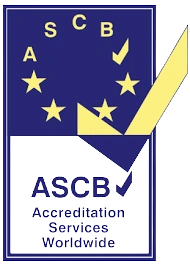Table of Content
Introduction
As organisations navigate the evolving landscape of human resource management, the role of the Chief Human Resources Officer (CHRO) has become more strategic than ever.
In 2025, AI-driven HR management systems (HRMS) are revolutionising how HR leaders manage talent, streamline operations, and enhance workforce engagement.
With automation, predictive analytics, and real-time insights, AI-driven HRMS is empowering CHROs to make smarter, faster, and more data-driven decisions.
In this blog, we explore the top 10 benefits of AI-driven HRMS for CHROs in 2025 and how it transforms HR operations for better efficiency and strategic impact.

Top 10 Benefits of AI-Driven HRMS
- Enhanced Decision-Making with Predictive Analytics
CHROs can leverage AI-driven HRMS to access real-time workforce insights and predictive analytics.
AI algorithms analyse historical data to forecast trends such as employee attrition, workforce productivity, and hiring needs.
With this intelligence, CHROs can make proactive decisions that align with business goals, reducing risks and improving workforce planning.
- Automated Recruitment & Talent Acquisition
Traditional recruitment processes are time-consuming and often prone to biases. AI-driven HRMS automates tasks such as resume screening, candidate shortlisting, and interview scheduling.
Machine learning algorithms assess candidates based on skills, experience, and cultural fit, ensuring the best talent is selected.
This automation significantly reduces the hiring time and improves the quality of hires.
- Personalised Employee Experience
AI-driven HRMS personalises employee experiences by offering customised career development plans, learning paths, and engagement strategies. AI analyses employee behavior and preferences to recommend training programs, mentorship opportunities, and career growth paths, fostering a more engaged and motivated workforce.
- Real-Time Workforce Analytics
With AI-powered dashboards and analytics, CHROs can monitor key HR metrics such as employee performance, engagement levels, and workforce productivity.
Real-time data helps in identifying bottlenecks and addressing workforce challenges promptly, leading to better business outcomes.
- Smart Compliance Management
Keeping a regular track of labor laws and regulations can be complex. AI-driven HRMS automatically updates policies in compliance with new labor laws, reducing organisations' legal risks.
AI can also flag potential compliance issues, ensuring HR teams take corrective actions before problems arise.
- Improved Employee Productivity
AI-powered automation eliminates repetitive HR tasks, such as attendance tracking, payroll processing, and leave management.
This allows HR professionals to focus on strategic initiatives, such as employee engagement and talent development, leading to increased workforce productivity.
- Advanced Performance Management
Traditional performance reviews can be biased and ineffective. AI-driven HRMS enables continuous performance monitoring through data analytics, employee feedback, and AI-based sentiment analysis.
It identifies skill gaps, suggests training programs, and provides unbiased performance evaluations, fostering a culture of growth and improvement.
- Seamless HR Process Automation
From onboarding to payroll, AI-driven HRMS automates workflows, ensuring smooth, error-free HR operations.
Self-service portals powered by AI chatbots enable employees to resolve HR queries instantly, reducing the administrative burden on HR teams.
- Enhanced Employee Well-being & Engagement
Employee well-being is a top priority for organisations in 2025. AI-powered sentiment analysis tools assess employee morale by analysing communication patterns and feedback.
HRMS suggests well-being initiatives such as mental health programs, wellness activities, and work-life balance strategies to improve employee satisfaction and retention.
- Cost Efficiency & HR Optimisation
By automating HR processes, AI-driven HRMS significantly reduces administrative costs. Organisations can optimise workforce management, minimise hiring mistakes, and improve overall HR efficiency.
AI-driven insights help allocate HR budgets effectively, ensuring maximum ROI on talent management strategies.
Conclusion
In 2025, AI-driven HRMS is no longer a luxury but a necessity for CHROs striving for efficiency and strategic workforce management.
With features like predictive analytics, automated recruitment, real-time monitoring, and compliance management, AI-powered HRMS transforms HR operations, making them smarter and more agile.
Platforms like uKnowva HRMS integrate AI-driven solutions to empower CHROs with cutting-edge tools for talent management, engagement, and compliance.
FAQs on Top 10 Benefits of AI-Driven HRMS for CHROs
-
How does AI-driven HRMS enhance decision-making for CHROs?
AI-driven HRMS provides real-time workforce analytics and predictive insights, helping CHROs make data-backed decisions on hiring, employee retention, and workforce planning. It minimises guesswork and improves strategic HR management.
-
What role does AI play in automating recruitment and talent acquisition?
AI automates resume screening, candidate shortlisting, and interview scheduling. It assesses candidates based on skills, experience, and cultural fit, reducing hiring time while improving the quality of talent acquisition.













